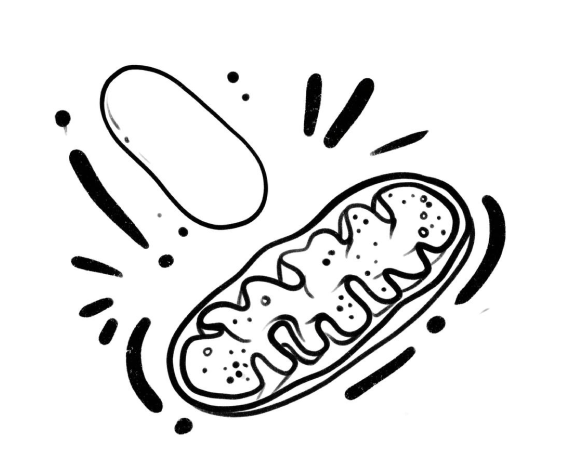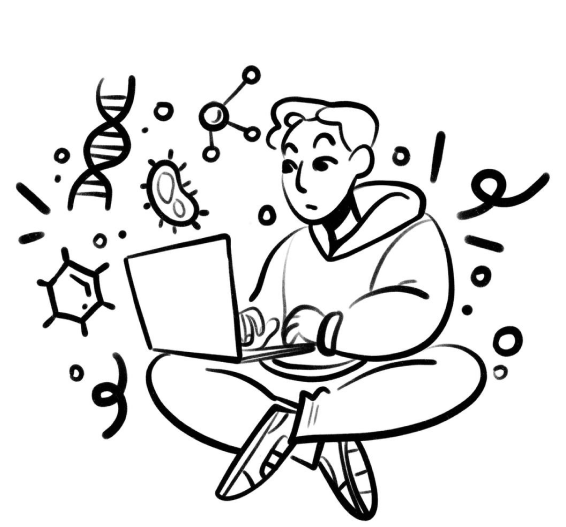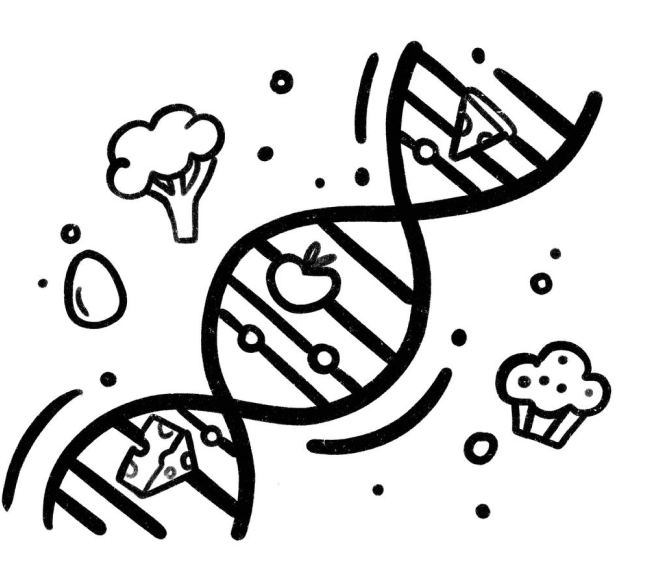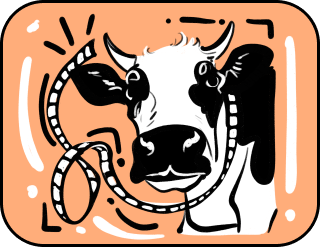Eternal life, food, and genetic experiments: Exploring the future
According to many experts, the field of biotechnology is set to experience a major breakthrough in the next decade. This is closely tied to research into the aging process. A significant portion of today’s studies focuses on unraveling the secrets of longevity, eternal youth, and perhaps even immortality.

People living today would love to get their hands on a “magic pill,” a youth injection, or even something to eat that could stop the very aging process and keep them forever beautiful, healthy, and young.
Scientists have discovered which set of genes controls the aging process at a fundamental level. This set of genes not only determines all the characteristics of an organism but also programs the aging process itself — how it will proceed, when it will begin, and whether it will begin at all. Today, all the necessary proteins and genes capable of influencing the regeneration process are delivered to a person intravenously. For example, if a specific protein is missing or damaged, the gene that codes for its repair is simply introduced into the body invasively. However, the question remains: how can the delivery of the corrective gene be made optimal and as targeted as possible —how can the right gene be delivered to the right place?
This is the discovery that the entire scientific community awaits, as it could be the breakthrough of the century, potentially elevating human longevity and youthfulness to a new level.
So, how did it all begin? Who was the first to pursue eternal life? And what does food have to do with It?

The dream of eternal life and youth has existed for as long as humanity itself. All great rulers, driven by their desire for eternal power, sought the answer to this question, often trying the most varied and, at times, absurd methods to remain forever young and immortal.
Cleopatra, for example, used donkey milk for her baths. Count Dracula and Hungarian Countess Elizabeth Bathory bathed in the blood of young virgins. Napoleon drank “living water” and believed in its miraculous powers, which turned out to be nothing more than simple cologne. In secret laboratories of Nazi Germany, they sought ways to extend the youth and strength of selected Aryans by conducting experiments on living people.
Some Chinese rulers consumed mercury and poison in small doses, believing it would help them. Various elixirs and magic pills were crafted everywhere, worked on by alchemists and so-called magicians.
If we dig deeper and ask: why donkey milk? Why young blood? Why poison and mercury? Today, scientists would explain it this way: by using these substances, people were attempting to alter their genome through the introduction of the genomes of other living and non-living organisms.
What If the alchemists and magicians were looking for the secret of eternal youth in the wrong place? And the answer lies elsewhere?
Returning to the scientific world and carefully examining what the brightest minds of humanity are currently working on, special attention is drawn to the study of cells in living organisms, where a unique protective mechanism has been discovered that can preserve youth and extend the lifespan of a living organism.

Scientists from Moscow State University, along with colleagues from Switzerland and Germany, conducted a series of studies and discovered that eternal youth is hidden in the mitochondria of living organisms’ cells.
Mitochondria are structures that, like power plants, provide cells with energy for all vital processes. Inside the mitochondria, the oxidation of organic substances occurs, and during their breakdown, processes are triggered that create an electrical potential. This, in turn, initiates the production of a substance called adenosine triphosphate (ATP), the body’s energy source.
But there’s a small catch: in the process of this breakdown, a byproduct is also released — ions and reactive oxygen species, which are powerful oxidizers. Over time, they lead to the destruction of proteins and lipids and cause mutations in DNA, which triggers the aging process. The task of scientists is to find a way to regulate the electrical potential in mitochondria, thereby controlling the byproducts and the aging process itself.
An interesting discovery, indeed. But is it possible to alter the body’s functioning without consequences and without breaking It?
There are also unconventional ways to influence the human genome to extend youth. While these methods have not yet been successful, they are still worth noting. One example is cosmic rejuvenation.
American scientists conducted an experiment in space involving two NASA astronauts —twins Scott and Mark Kelly. Scott spent nearly a year living on the International Space Station. During this time, his health was monitored, and various tests were conducted. The results were surprising: in the weightlessness of space, the telomeres of Scott’s white blood cells didn’t shorten as they do with natural aging, but instead grew. Meanwhile, his brother, who remained on Earth, experienced the normal aging process. However, upon Scott’s return to Earth, his telomere length returned to levels similar to those measured at the beginning of the study. Therefore, it’s too early to talk about stable results, and the method requires further investigation.
Another intriguing study, which many scientists remain skeptical about, but which its founder, the Austrian biologist and genetics professor David Sinclair, believes is promising, involves clearing the body of accumulated dead cells that hinder its normal functioning.
Sinclair suggests that aging occurs due to the epigenome — molecular markers that alter gene activity. As we age, these markers accumulate, and the body’s cells stop dividing properly. Sinclair proposed that the epigenome should be reset, similar to clearing the cache in a browser. To do this, he used Yamanaka factors —proteins that reprogram cells into stem cells.

The experiment on mice was quite successful: the neurons in old animals began to function like those of younger ones. Sinclair went further and has already managed to halt the aging of brain and muscle cells in mice and is now working on general tissue rejuvenation. He believes in the success of his method, but proving its safety and getting approval for testing on human volunteers will take time.
Numerous studies have shown that telomeres, which shorten with age, are key to extending human life and youth. If a reliable method to increase their length can be found, it may become possible to reverse the aging process.
So, what are the real chances of prolonging youth and achieving eternal life?
Scientists around the world are searching for people naturally endowed with exceptional abilities for youth and longevity to identify that very extraordinary gene and use it in either protein or gene therapy. Based on this gene, scientists aim to create an artificial corrective gene that could influence the genes responsible for aging. Interestingly, when the corrective gene is introduced into an aging genetic set, it sends a rejuvenation impulse, encouraging other genes to rejuvenate as well. It’s almost like a call to action: “I did it, and so can you!”
Already, we see interesting results from such experiments.
In 2015, Elizabeth Parrish, founder of BioViva Sciences, a company developing cutting-edge biotechnologies, participated in an experiment conducted by her own scientists. They injected her with a compound containing her own enhanced DNA. Before the experiment, scientists measured her biological age. Though Parrish was 44 years old at the time, her biological age was assessed at 65.

After the injection, her biological age decreased to 45. By 2018, it had further dropped to 33. This suggests that the woman began a process of cellular rejuvenation. Here’s what Elizabeth Parrish herself says: “I’ve become much more active. Just yesterday, I climbed a mountain alongside my 19-year-old son. Before the first injection, my telomeres were very short, about the length typical for someone aged 65, but after the injection, we saw that they were growing. A year ago, I had another injection. Now my telomeres are the average length of someone aged 30–33, even though I’m actually 51.”
Of course, such results are astounding. Perhaps we really are on the brink of a great discovery that will grant us eternal life.
However, there are other indicators that make one pause for thought. Another growing trend is biohacking — the attempt to reprogram the body for eternal life and youth. This movement has consumed people obsessed with finding the magic pill or elixir capable of hacking the DNA code, so much so that it has expanded beyond scientific laboratories into “garage” research. What’s concerning is that the number of “garage” biohackers is increasing every year, as is the number of visits to traditional doctors after biohacking attempts. Statistics show that in 2024 alone, the number of such patients increased by 25%.
Among biohackers, there are plenty of dreamers and jokers. For example, Meredith Patterson, a programmer from San Francisco, gained fame by creating a glowing yogurt, embedding a fluorescent protein into the genome of lactic acid bacteria.
But experimenting with yogurt is one thing, and experimenting with the human body is another. Industrial designer Naomi Kizhner has developed a collection of jewelry that converts the body’s kinetic energy into electricity. The pieces can harvest energy from blood flow and the electrical impulses sent through the nervous system along the spine.
Another group of biohackers went even further by implanting small magnets into the nerve endings of their fingers to feel things invisible to most people. Using the magnets, biohackers can detect live electrical wires and even sense archway metal detectors in stores or airports.
Another group of biohackers developed eye drops with a substance derived from the depths of the sea called Ce6. This substance is used in cancer treatment and helps combat night blindness in people with degenerative eye diseases. Gabriel Licina injected this substance into his eyes to gain night vision and is now able to see objects in the dark from up to 50 meters away.

Despite these varied and strange innovations, it’s important to exercise caution before trying out methods that haven’t been confirmed by clinical trials and proven results. At this stage of human evolution, neither a pill, an injection, nor anything implanted, consumed, or eaten can extend your life. However, it can end it in an instant.
Speaking of what is consumed, while scientists are searching for ways to improve the human genome to achieve eternal life through a unique corrective gene, the food we eat is already influencing our genetic code, often for the worse.
Remember Hippocrates’ famous saying: “You are what you eat.” In today’s world, this is becoming more evident. What we eat leaves an indelible mark on our genome. Modern human diets can either harm health or, conversely, improve it. Improvement occurs by selecting foods that help the body become more resistant to various diseases, thus reducing their risks. By reducing risks, we extend our lives. Isn’t that another way to prolong life, even if it doesn’t make it eternal?
So how do the genes in food affect the human genome?
Genes are small segments of a DNA (deoxyribonucleic acid) macromolecule, where information about the structure of a protein or RNA (ribonucleic acid) molecule is encoded.
DNA, RNA, and proteins are the building blocks for all living organisms. Therefore, the information carried by a gene is crucial: it allows the organism to understand which proteins need to be produced at any given moment. Genes are often compared to blueprints or plans that an organism uses to build itself.

If you break down DNA into its constituent parts, the gene would be the smallest piece. It is passed from parents to children exactly as it is, in its entirety. The exact number of genes in the human body remains uncertain, but according to the latest official data, humans have around 20,000 protein-coding genes.
As early as the mid-19th century, Gregor Mendel and other scientists speculated that the inheritance of specific traits from ancestors to descendants occurs through small particles. In 1889, Dutch botanist and one of the founders of genetics, Hugo de Vries, called these particles “pangenes” in his book Intracellular Pangenesis. The term “gene” itself appeared ten years later, in 1909, introduced by Danish biologist Wilhelm Johannsen. In the 1940s, American bacteriologists proved that the transmission of traits from one organism to another happens via DNA. A few years later, the first high-quality images of DNA structure were obtained, marking the beginning of an intensive study of genes.
The largest international project dedicated to the study of genes was called the “Human Genome Project.” It began in 1990 in the United States. The genome is the entire set of human DNA, including all the information contained in genes. By 2003, it was believed that 85% of the human genome had been sequenced, meaning decoded, but a small percentage of genes remain unsequenced.
Thanks to this program, it became known that the genes stored in DNA can reveal not only a person’s blood type, eye colour, sex, and height, but can also identify predispositions to genetic diseases and determine which foods can trigger or prevent these diseases.
It turns out that some nutrients can switch genes on or off, coding the body for health or disease. Two sciences currently exploring these findings are nutrigenomics and nutrigenetics.
Nutrigenetics is the science that studies the influence of genes on the consumption and absorption of various types of food. It helps answer the question of why one person tolerates a certain product well, while another suffers from it.
Nutrigenomics is a still-developing field of science that studies the impact of diet and supplements on gene regulation. Nutrigenetics claims that a person is given a certain set of genes that cannot be changed. Nutrigenomics, on the other hand, suggests that while genes cannot be changed, their activity can be influenced through nutrition.
To identify individual characteristics of the body, such as food intolerances and predispositions to genetic diseases, genetic tests were developed. However, debates continue around these tests: are they just a fashionable trend, or a truly beneficial health tool?
Based on test results, scientists can formulate a diet that provides greater benefits to the body, potentially blocking the development of diseases encoded in a person’s genes. Interestingly, genes can also tell us which type of sport is best suited for us and even the climate we should live in. Fascinating, right?

Biologists have long established that the genomes of living organisms can adapt to their environment. This means that human genetics can be influenced by lifestyle, climate, pathogens, and diet.
One common example is how different populations digest milk. The lactose in milk is broken down by a special enzyme called lactase. The gene responsible for producing this enzyme is usually active only in newborns, and after weaning, its expression decreases, leading to a reduction in lactase levels. For example, 98% of the population in China experiences severe lactose intolerance, whereas among the Dutch, Swedes, Norwegians, Danes, and British, lactase production continues for up to 20 years, and sometimes for life. This mutation enabled the ancestors of Scandinavians and the English to settle in areas unsuitable for farming but ideal for raising livestock.
The concept of using genetic testing to shape diet is also based on the dietary paradoxes of various peoples, such as the Inuit, the indigenous peoples of North America. This ethnic group primarily consumed fish, whale, and seal meat. Despite the high fat content, they never suffered from heart attacks. Therefore, modern people who have inherited genes from northern populations can afford an extra fatty meal without harming their health.
The essence of personalised nutrition is that certain genes influence obesity, satiety, and susceptibility to specific diseases. A study conducted in Europe, which involved 1,000 participants, showed that personalised diets encouraged more people to adopt a healthy lifestyle. However, the results were not entirely straightforward. It turned out that people’s usual food preferences and common sense in eating led to similar positive outcomes.
So how do the genes in food affect human genes?
Nutrition is an essential part of our lives and a crucial element in supporting immunity, activity, and even emotional and psychological states. Science continues to advance, providing more and more explanations of what influences the human body and how it does so.

In 1996, scientists conducted a study claiming that the potential of foods and dietary supplements can alter genes associated with human diseases. For example, epigenetic nutrition has become popular. The essence of this nutrition lies in the fact that certain substances in specific foods can influence DNA in a targeted way. Epigenetic nutrition regulates the switching on and off of genes found in different cells.
For instance, the peel of citrus fruits contains flavonoids that enhance the expression of a gene involved in the body’s natural defense against cancer. Broccoli and cauliflower can activate dormant genes in cancer cells that suppress tumor growth. Consuming fibre promotes the production of butyric acid in the gut microbiota, which also affects gene function, activates the immune system, and suppresses cancer cell growth.
Chicken eggs, spinach, liver, and legumes contain folic acid, choline, and methionine, which deactivate pathological genes responsible for diabetes and obesity. Every woman knows that for a healthy pregnancy and proper fetal development, folic acid is necessary in the diet, as it boosts the function of the gene involved in the child’s growth and development.
In nutrigenomics, the effects of fatty acids that restore lipid metabolism are actively studied. Polyunsaturated fatty acids (PUFAs) have a beneficial effect on the nervous and cardiovascular systems and reduce cholesterol levels by activating the corresponding gene. Sources of fatty acids include olive oil, tuna, salmon, and seeds.
Unsaturated fatty acids (UFAs) have the opposite effect. They influence the activation of genes that cause immune deficiency. Various studies have demonstrated their negative impact on the body. The World Health Organisation recommends reducing the intake of unsaturated fatty acids to 5% of the daily diet. Such fats include egg yolks, meat, coconut oil, palm oil, butter, and cheese.
Another interesting study was conducted at the University of Edinburgh, revealing several notable findings. Researchers divided foods into several groups and correlated them with brain responses:
Group 1: Caloric and tasty junk foods
Group 2: Low-calorie foods
Group 3: Foods that provide pleasure as we age
The study involved 325 different genes. It was found that several biological processes in the brain regulate our preference for healthy or unhealthy foods. MRI scans showed that the brain’s pleasure centre is activated by tasty and caloric foods, while the sensory perception area, responsible for decision-making and self-identity, is activated by low-calorie and healthy foods.
Another interesting detail was the behavioural effect of personalised nutrition. Research by Nutrigenomix revealed that if people were merely advised to limit sodium intake, they often did not comply. However, when the recommendation included the statement, “You have a gene that increases the risk of hypertension due to sodium consumption,” the recommendation was taken seriously, followed, and maintained over many years.
Will humanity be able to achieve a breakthrough and advance to a new level of life? Are we capable of reversing the aging process, and is it necessary to do so from the perspective of natural cycles?
The answers to these questions remain unresolved. Certainly, from the standpoint of combating severe diseases, finding a key in the form of a corrective gene is essential. But in other cases, is it wise to intervene in processes that were not designed by us?

One thing is clear: at this stage of development, a rational person can maintain their health through relatively simple means: a proper diet tailored to their genotype, an active lifestyle, and attentive listening to their body’s needs.
Stay rational and critical thinkers.
Your thought is a big bang of ideas. Our journal is its source.
Thank you!




